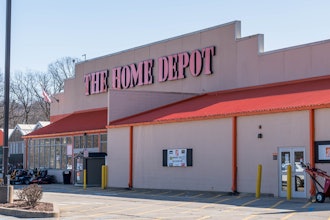When a business sells physical product in any capacity, a functional and efficient warehouse becomes crucial to the productivity and success of their operation. Until the Internet Age, warehousing and distribution remained largely the same across industries. However, the rise of e-commerce led to massive technological and operational changes, and many businesses have been forced to rework their entire business models to remain relevant and competitive.
E-commerce and the Consumer
It’s no understatement to say that e-commerce has changed the way people shop. 54 million people are now Amazon Prime members, which amounts to nearly half of U.S. households. This massive influx of members has set a precedent for shoppers when it comes to competitive pricing, ease-of-use, and shipping times.
Additionally, mobile shopping has become a simple and risk-free experience. In fact, approximately 20 percent of all digital dollars are spent on a mobile device. With the shopping experience in the consumer’s hand rather than at a mall 30 minutes away, researching and purchasing products digitally have become that much more appealing. As a result, e-commerce sales have continued to skyrocket.
Primarily due to e-commerce, traditional brick and mortar stores have seen a major decline in sales over the past several years, forcing some completely out of business. As a result, many businesses have opted for a solely online presence.
How Warehouses Can Succeed in this Environment
With all these changes in business models and consumer expectations, warehouses have adapted tremendously. Here’s where many warehouses are finding success in this environment:
Better technology and software
Connecting the real world to the digital world is crucial, especially when it comes to warehouse and inventory management. To keep up with e-commerce, major technological advancements have been made to effectively track the product from stock to shipment. Furthermore, being able to find the location of a product immediately requires advanced inventory-management systems, because the old paper-and-pen method just won’t do anymore.
Proper employee training
With any successful business, demand will continue to increase, and the orders coming in won’t slow down. Therefore, a warehouse should function like a well-oiled machine with properly trained employees to ensure it never stops running. Requiring that workers follow protocols and understand warehouse technology is essential to avoiding disruptions in the system.
Innovative material-handling equipment
Floor space in warehouses is incredibly valuable since any space not properly utilized could have been used to store more product. As such, the right equipment and workflows are incredibly important for productivity and warehouse capacity.
Many warehouses function on multiple levels, requiring that materials or products be moved from one level to another safely and efficiently. There are many options that can accomplish this ranging from elevators to spiral conveyors to manual employee labor. However, most warehousing operations opt for the most cost-effective, efficient, and safest option available.
The product that most often fits the bill is a vertical reciprocating conveyor, or VRC. Not only are they more low-maintenance and cost-effective compared to freight elevators, they also have the smallest footprint, making them a space-saving option for efficient warehouses.
The Future of E-commerce
E-commerce is the future, and it’s not going away anytime soon. Thankfully, warehouses will not be obsolete in this future, as they will always be needed to store and ship physical products. As technology and consumer expectations advance, warehouses will need to innovate and adapt with the changing landscape. However, judging by how warehouses have reacted in the last decade, they are more than capable with the right employees, technology, and equipment at their disposal.
Sierra Clark is the Marketing and Advertising Coordinator at Custom Industrial Products. She works as their copywriter, web designer, graphic designer, and strategy developer.






















